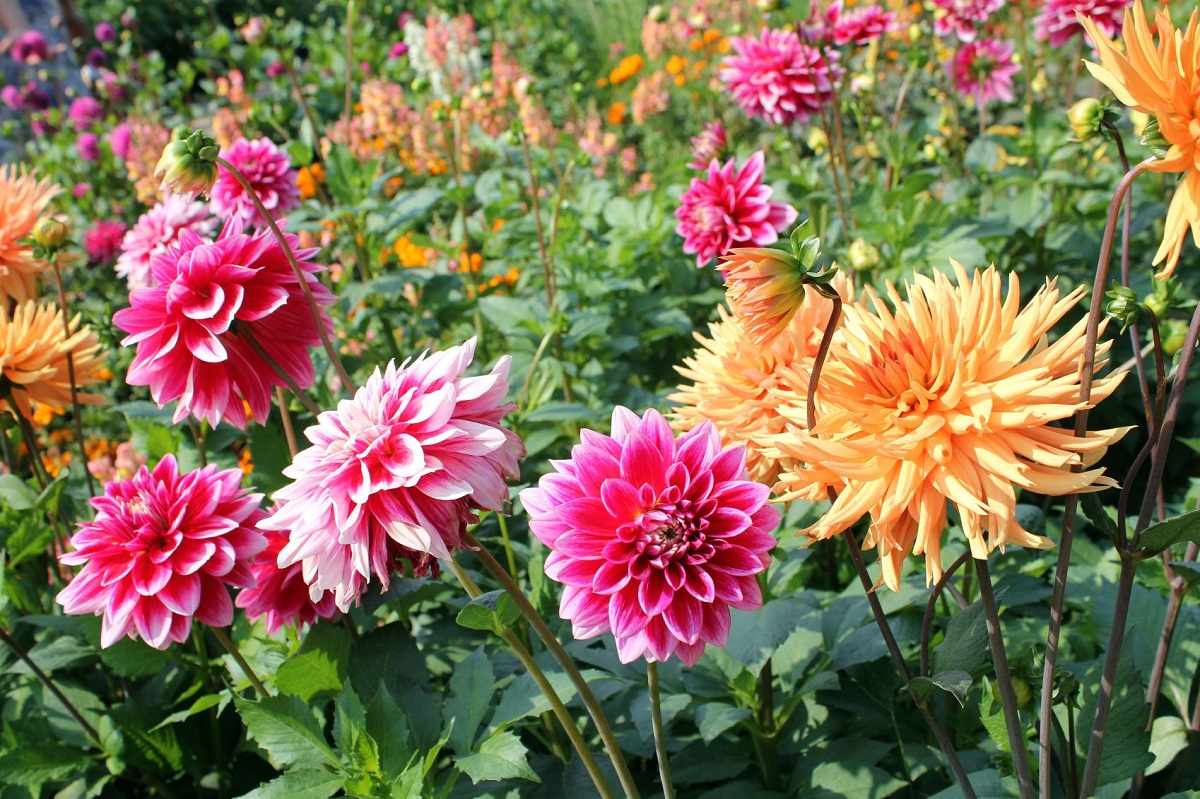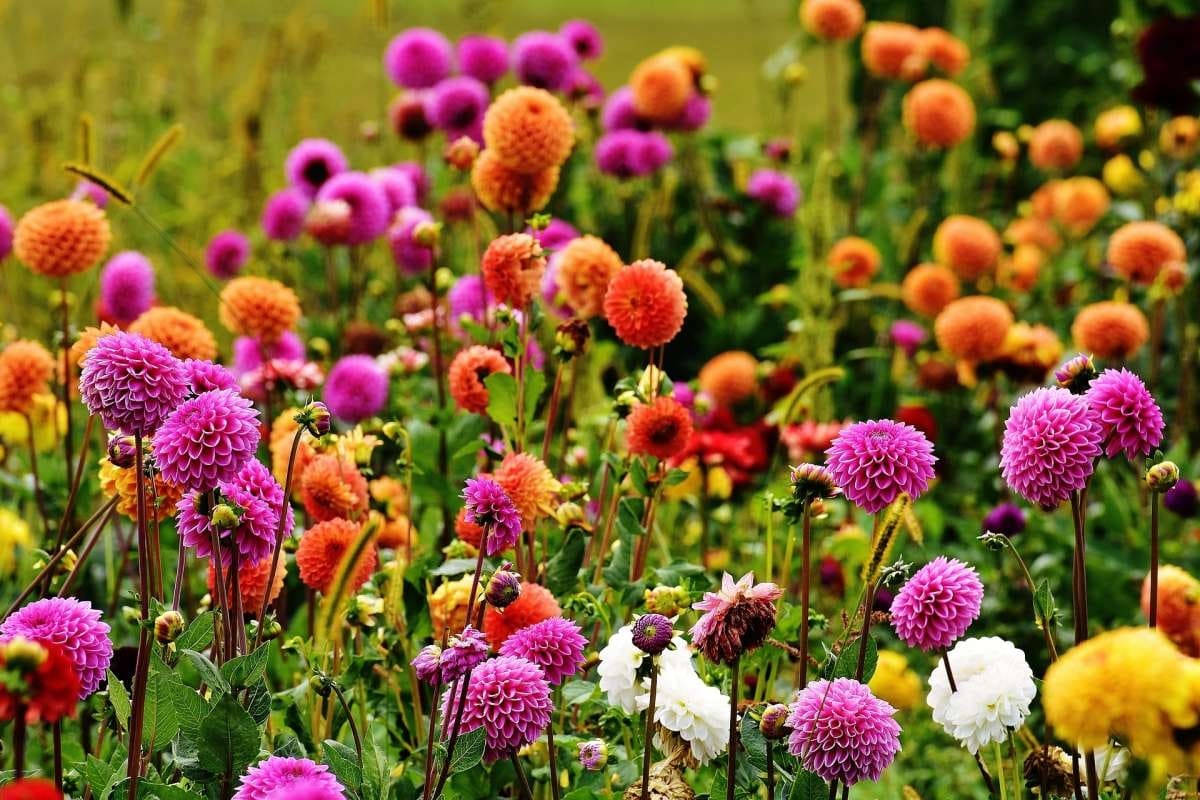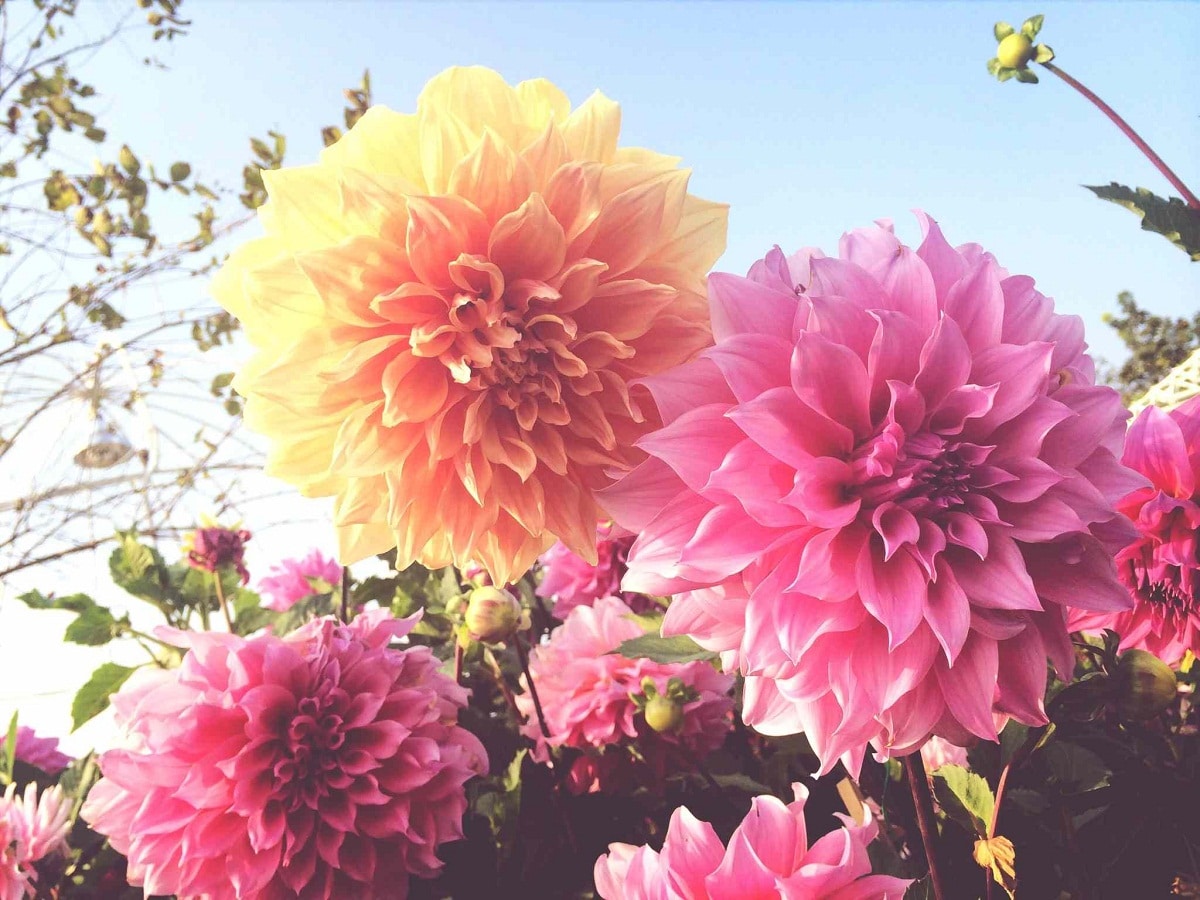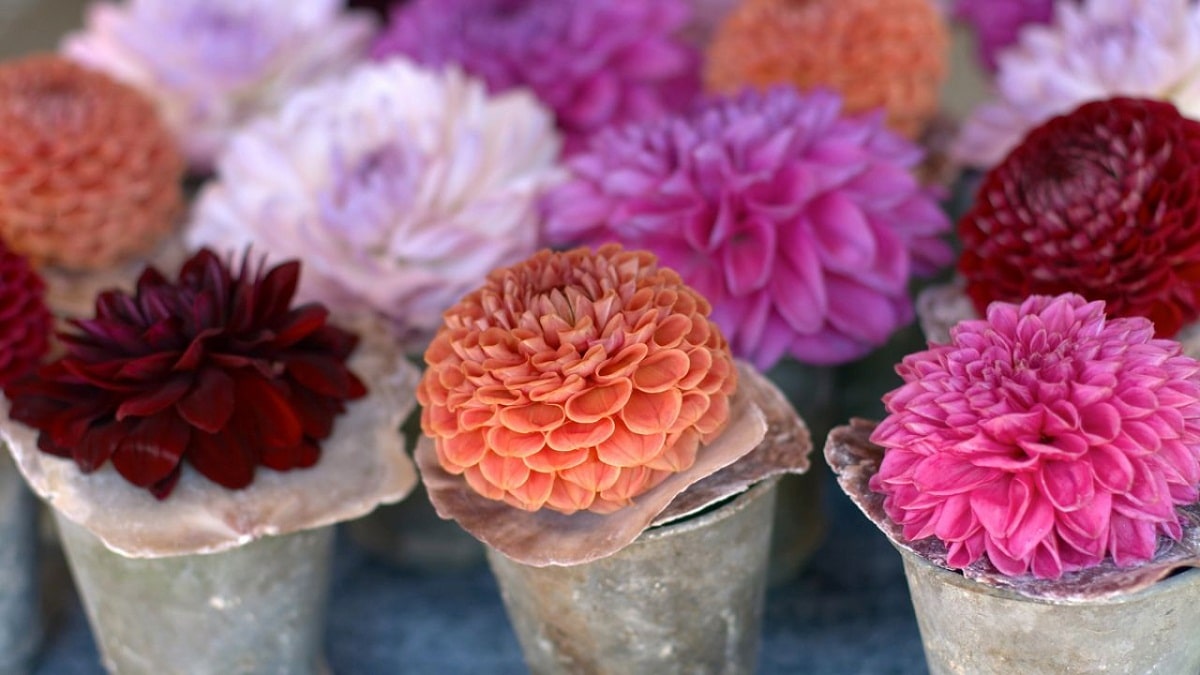
Dahlias are perfect to have in pots, in planters together with other similar plants, and even in the garden, thus creating a spectacle of colors during the summer.
Dahlias are native, mainly from North America, specifically from Mexico. They are highly prized by plant lovers due to the great variety of colors and shapes of their flowers, of which it is estimated that there are about 20 cultivars on the International Dahlia Registry.
General care of dahlias

If you are one of the people who want to have these plants or you already have some, you should bear in mind that the general care of this flower is based on several fundamental aspects: Light and location, climate, soil and compost, irrigation, flowering and pest control.
Light and location
For this plant to develop properly, it should be located in an area with plenty of lighting, especially if you want to enjoy its beautiful flowers.
Within the space where you are going to place it, locate a place where the plant can receive a lot of light, which can be next to a window or in a point of light inside your house.
Now, if the area where you live the sun is very intense, you will have to place it in a semi-shady area, or where it can be sheltered from the star king during the hours of most intense influx, which is usually at noon.
Another factor to consider when choosing the place for your plant, must be the air current that passes through it, since if it is strong, your dahlia could do enormous damageSo find a place that gives the plant adequate protection.
Climate
Dahlias are thrive best in a temperate climateIt could be said that it is their favorite, but despite the fact that they withstand the heat well without direct contact affecting them for a long time, they can also withstand low temperatures and frost down to -5ºC.
There are areas where the frosts are much stronger than in others, so you will need to help your dahlias with a thick vegetable mantle on its base and its bulbs, although you can also remove the latter and store them in a protected place, if the temperature is really very low. Once the frost has passed, you can plant them again without any problem.
Soil and compost
As for the land where you can plant or have your dahlias, find out that it must be enriched with a good amount of organic matter, so we can recommend that this be worm humus, compost or bokasni, since these fertilizers will allow you to have your plant free of synthetic chemicals.
When you have to place it to plant the dahlia, you have to remove the soil or substrate, so that it is loose and has better drainage. Use all the fertilizer or compost you want, since an abundant amount will help you to enrich it to a great extent and remember to repeat this technique each winter.
Irrigation
Although dahlias are heat resistant, it does not mean that they will not need you to water them, on the contrary, the plant will greatly appreciate your watering frequently and abundantly, especially on those days when it is warmer than normal.
For this you will have to wet all the earth and not the leaves of the plant, and much less its flowers, since in this way you will be avoiding problems of excess humidity.
It is worth reiterating that it is very important that you water your dahlias frequently during hot seasons, but without overdoing it, as otherwise the bulbs will not hold excess water or moisture, so, if you do it little, but often, you can avoid the above.
Flowering

Dahlia lovers, you should know that these plants bloom within two months of planting their bulbs, time in which it will be necessary for these flowers to be cut, only when they have opened and reached the appropriate stem length.
When the plantation is 9 months old, the necessary material may be extracted to produce stakes, according to the mechanical extraction of the tubers of this plant.
Pests
Pest control in dahlias will not be a problem if they are cared for properly, as these are resistant to various pests and diseases, although the aphid black is his main enemy.
The stems of this plant are the favorite place for this insect, although it can also be affected by the green aphid, which struggles to be in the initial part of the stems. You will have to crush them without wanting to completely eliminate them, of course, without damaging the plant at any time.
Another pest that is also favored by dahlias are snails, but to combat you will need to make some traps.
If you don't have the necessary care with this plant, may suffer from mosaic virus, but also of the bacteriosis disease, which if it affects it to a great extent, will force you to discard the plant, so better avoid wetting the leaves and flowers of your dahlia.
Features
They reach a height of between 30 and 100 cm with multiple branches, feature by which you can have it where you like the most.
These plants are sun-loving, so they won't grow well in shady or semi-shady places. You can also have it indoors as long as the room is very bright and can give it about 3-4 hours of direct light (or through a window).
The underground root of the dahlia emerges from the neck of the plant and is of the widely fasciculate tuberous type. It grows in knots or internodes, constituting a structure that it can store and reproduce.
As for its leaves, these depend on each of the dahlias species, but these can be simple or compound, but all in opposite or whorled arrangement. Its leaf blade can be found whole or divided, oval in shape with serrated or straight edges and green in color.
The flowers of this plant are on its stem and are grouped. The shape of this varies according to the species, as well as its size and color, but the most predominant are in red, white, pinkish orange and purple.
In summer and ending in autumn, are the times in which the flowering of dahlias usually occurs. Although they can also flourish in hot climates, high temperatures can cause the flowering process to stop.
Dahlia types

The dahlia is a plant of which more than 50 thousand species are known, but there are some that are better known than others, so we will tell you what are some of those copies:
Simple
Specimens of dahlias simple do not have the common size of other species, since they can reach between 45 and 60 centimeters, while the diameter of their inflorescences reaches about 10 centimeters and they are mainly tubular flowers that are surrounded by reeds in rows.
Anemone
Another type of dahlias are Anemone, which are very popular and can grow to between 60 to 90 centimeters, where its inflorescences are also approximately 10 centimeters in diameter.
They may have a row of reed flowers or several, which are located on the edge, while within this It has a disk of large tubular shaped flowers.
Necklace
The collar-type dahlias, They are flowers that convey an impressive beauty and that can be better appreciated, thanks to the height that they can reach, which is between 75 and 120 centimeters, while their baskets can have a diameter of 10 centimeters.
Regarding the inflorescence of these dahlias has a row of reed flowers, which are supported by a transition collar ring, which contains a tubular disk inside.
Nymphs
This type of dahlia can reach up to 1,2 meters in height, where its terry inflorescences they are flattened and can be up to 15 centimeters in diameter.
The reed flowers of nymphs are flat and have edges that are slightly raised.
Decorative
Another type of dahlias are decorative ones, some flowers that reach up to 15 meters in height and whose inflorescences of 25 centimeters or more, has marginal cane flowers, which are wide and forceful.
Spherical
There are also dahlias of the spherical type, which, as the name says, They are spherical in shape and with pompoms that are similar, so they are only distinguishable by the diameter of their plush inflorescence.
The spherical growth of this flower can reach up to 1,2 meters and have a diameter of up to 15 cm of flowers of rounded or obtuse canes.
Pompom
Pompom dahlias have a ball-shaped curl inflorescence It can reach 5 centimeters in size, and its marginal flowers are folded with a rounded or blunt tip.
Remember that these are just some of the types of dahlias that exist, as there are many more, although the general care of them and the conditions for their development will always be the same.
Following the tips mentioned in this article, you can keep your dahlia plantation safe or start one if you don't have it yet. The important thing is that you always ensure that it has everything it needs for its proper development, thus being able to continue enjoying this spectacular plant.
Thanks for the info. Just a correction, Mexico is not from South or Central America, it is part of North America. Greetings.
Whoops, right. Corrected. Thanks!
Hi, I just bought a dahlia pot. I have it on a balcony but I don't know if it should give it direct sun or shade, I am afraid that the flowers may wither. It also has many sheets, is it convenient to remove the ones below?
Hi Aurora.
Dahlias are plants that love light. But if in the nursery they had it protected, it is better that you put it in semi-shade.
You don't have to remove the leaves.
Regards!